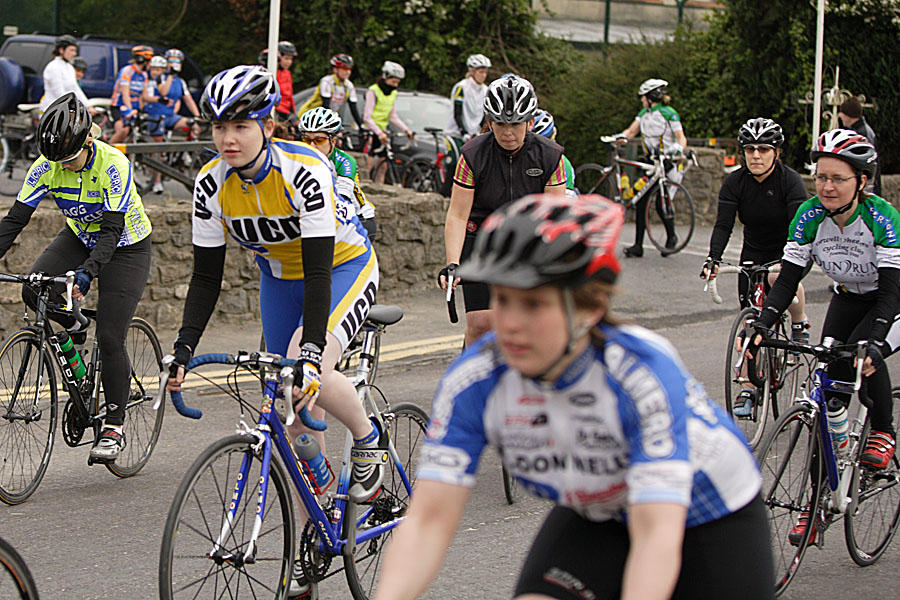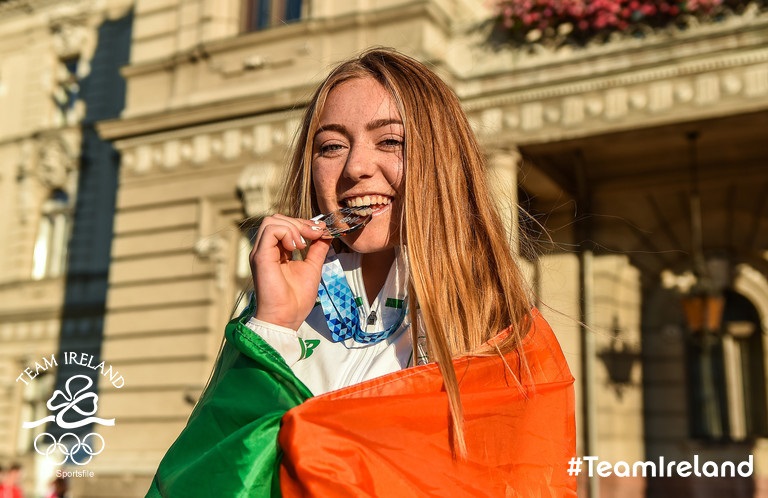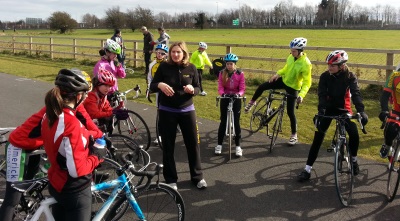Women’s Cycling Forum – Changing the Landscape
Whilst the number of women cycling has increased significantly over the past number of years, the percentage of women competing on the bike has seen a drop. A recent analysis of the Cycling Ireland membership and survey of the female members triggered a national forum this month, highlighting the need for changes in the competitive landscape and a discussion on what those changes should be.

The gender gap is narrowing in Irish cycling, with one in five Cycling Ireland members being female – a stark difference to 2010 when only 8% of the membership was female. Programmes like Bike for Life and other participation drives has assisted in this growth.
However, out of over 5000 female cyclists, only 190 hold a full competition licence: this translates to a drop from 9% to 3.5% in the number of women holding a competitive licence in just seven years. Even more worryingly is that only 26 of all Cycling Ireland members, across 32 counties, are junior women.
Low numbers competing at events brings challenges; challenges for the riders, for the event organisers and for the future of the sport. Event organisers can be hesitant to host women’s only races as they are afraid of not getting good attendance. Conversely, the main challenge female racers are faced with is the fear of turning up to a race with a poor turn out. There’s a massive pressure on the top tier of competitive women to turn up at every women’s race held, regardless of location, race profile, or time of the year. Take the National Road Championships – the women’s race had a 70% turnout from the top tier Irish women, compared with a 22% turn out for the top tier men.
 In 2002 the Women’s Commission was formed with the goal of increasing the number of women racing, with its role expanding in recent years to becoming a support body for female cyclists across all cycling disciplines. In the previous year (2001) a beginner’s cycling league - The Boot Inn League - was established to entice and encourage more women into cycling, with positive results. The beginners’ leagues have a proven record of attracting women into the sport, being held in a safe and welcoming environment.
In 2002 the Women’s Commission was formed with the goal of increasing the number of women racing, with its role expanding in recent years to becoming a support body for female cyclists across all cycling disciplines. In the previous year (2001) a beginner’s cycling league - The Boot Inn League - was established to entice and encourage more women into cycling, with positive results. The beginners’ leagues have a proven record of attracting women into the sport, being held in a safe and welcoming environment.
A National League soon followed, with it becoming incorporated with the men’s league in the form of the National Road Series in 2017. This league targets the top tier racers, and serves as a training ground for women looking to compete in Ireland’s premier race for women – Rás na mBan – an international stage race.

 The standard of women’s racing is high – take Lydia Boylan, first Irish winner of a stage in a professional race on the women’s scene; or Lara Gillespie, the first Irish cyclist to win a medal at the European Youth Olympic Festival. Both have come through the Irish system, achieving results on the world stage.
The standard of women’s racing is high – take Lydia Boylan, first Irish winner of a stage in a professional race on the women’s scene; or Lara Gillespie, the first Irish cyclist to win a medal at the European Youth Olympic Festival. Both have come through the Irish system, achieving results on the world stage.
The Women’s Commission want to see more women competing on a domestic stage, and a stronger pathway through to high performance.
However, the survey of female racers threw up some interesting findings:
· The average age of a female racer is 36 – which brings with it a few extra challenges like work and family commitments.
· Most competitive cyclists have come to the sport from other competitive sports.
· Over half discovered the sport through family or friends, highlighting the need for more awareness about access to the sport and opportunities within it.
· A whopping 54% of those who don’t compete in cycling gave the reason for not doing so as being because they don’t think they are good enough.
· Over half of the respondents said they would compete in a beginner’s league if there was one in their area.
· The biggest motivation for those surveyed was the physical challenge, the desire to push their limits and watching their personal progress – with the desire to win coming further back in motivations.
· Many of the committees in Cycling Ireland have no females, with the average percentage of committees being 10% female.
 Following an in-depth discussion, which was attended by CEO Geoff Liffey and President of Cycling Ireland Ciaran McKenna, several actions were decided upon, including the creation of second tier of racing, to allow a step up from the beginner’s leagues. It was also decided that specific coaching days would help, as well as an increased focus on the structures in youth cycling.
Following an in-depth discussion, which was attended by CEO Geoff Liffey and President of Cycling Ireland Ciaran McKenna, several actions were decided upon, including the creation of second tier of racing, to allow a step up from the beginner’s leagues. It was also decided that specific coaching days would help, as well as an increased focus on the structures in youth cycling.
Two motions have been put forward for vote in November’s Cycling Ireland AGM; a requirement for equal prizes to be presented to boys and girls at competition, as well as a motion to abolish a rule that allowed girls to compete an age category down against boys. Should these motions be passed it would have a significant, positive impact on how female cycling is treated in terms of respect and recognition.
With the numbers of women cycling going in the right direction, collaborative thinking should go some way towards attracting more women into bike racing in Ireland. In a positive move a committee was established at the forum to specifically address the roll out of beginner leagues, and the creation of an intermediate league in an attempt to create a more concise, clear and achievable racing pathway in the sport.
The beauty of bike racing is that it doesn’t matter what age or ability you are – there are racing opportunities. In many cases women come into the sport later in their sporting career, and love it. However, there is a chance that people may miss the opportunity to develop and compete to their full potential due to lack of awareness of the routes into the sport.
